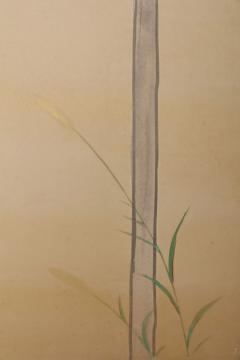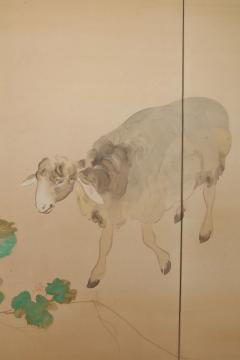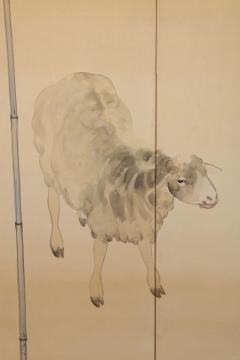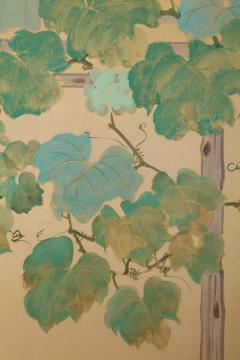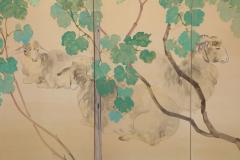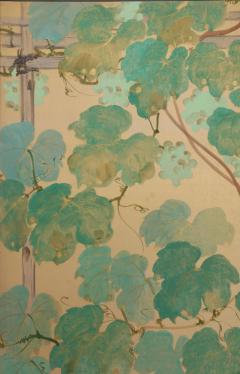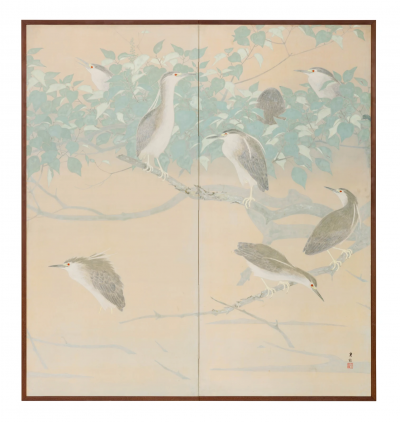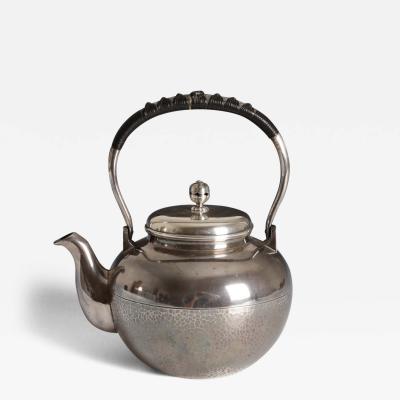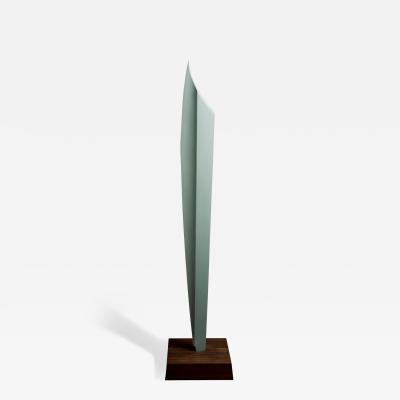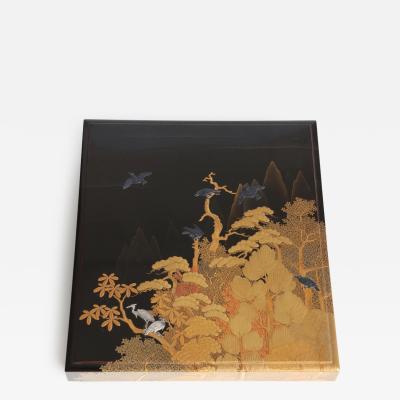Listings / Fine Art / Mixed Media / Animals
A Long Day (T-3810)
-
Description
Furuya Itcho
A Long Day, ca 1918-1920
Pair of six-panel folding screens; ink, mineral colors, gofun (powdered calcified shell) and gold wash on paper
Each screen 67½ x 142 in. (171.5 x 361 cm)
Each screen signed Itchō with seal Itchō gain (Painting seal of Itchō)
Born in Kyoto, Furuya Itchō (birth name Tōzō) graduated from the Painting Department of Kyoto Municipal Art and Craft School (1909) and then from Kyoto Municipal Painting School (1912); he also studied with Yamamoto Shunkyo (1871–1933). He first exhibited at the Bunten national exhibition in 1909, while still a student, and would go on to become one of the stalwarts of the Bunten, Teiten, and their successor national exhibitions, showing no fewer than 17 times through 1942.
In this tranquil fall scene, a flock of sheep—farm animals not often seen in earlier Japanese art—graze and rest contentedly in a field expressed only in faint patches of gold wash. Starting from the leftmost panel of the right-hand screen, a bamboo and timber pergola supports a heavily fruiting grape vine that grows from the center of the left-hand screen, its branches perfectly suited to the sinuous curves associated with the Rinpa painting manner (see below) while the bamboo uprights create an eye-catching pattern in combination with the vertical hinges of the screen.
Animal and plant forms meld to create a satisfyingly coherent whole but, remarkably, Itchō had painted an earlier version in ink only, eliminating the vine altogether and showing just the sheep. The disposition of the animals in the screen with seven sheep was almost exactly the same, but it formed the left, rather than right, half of the pair; the other screen still had four animals but the rightmost sheep was shown reclining, its head turned over its back looking at the viewer. This earlier version was shown at the twelfth Bunten exhibition in 1918 (see above). We can imagine that the affluent crowds thronging the galleries showed so much interest in Itchō’s somewhat sparse monochrome composition that he decided to produce something more vibrant and therefore perhaps even more saleable, successfully combining new versions of two long-standing Japanese painting manners: the Maruyama-Shijō tradition of closely observed animal painting, here executed in ink, and the Rinpa tradition of gorgeously colored plant painting, here using lavish quantities of malachite pigment in two different tones. The Rinpa approach in fact extends to the sheep, whose coats are depicted using a monochrome version of the tarashikomi technique in which one layer of paint is applied over another before the first has dried. -
More Information
Documentation: Signed Period: 1900-1919 Creation Date: 1918-1920 Styles / Movements: Asian Art Dealer Reference #: T-3810 Incollect Reference #: 558509 -
Dimensions
W. 142 in; H. 67.5 in; W. 360.68 cm; H. 171.45 cm;
Message from Seller:
Thomsen gallery, located in a townhouse on the Upper East Side of Manhattan, offers important Japanese paintings and works of art to collectors and museums worldwide. The gallery specializes in Japanese screens and scrolls; in early Japanese tea ceramics from the medieval through the Edo periods; in masterpieces of ikebana bamboo baskets; and in gold lacquer objects.

















